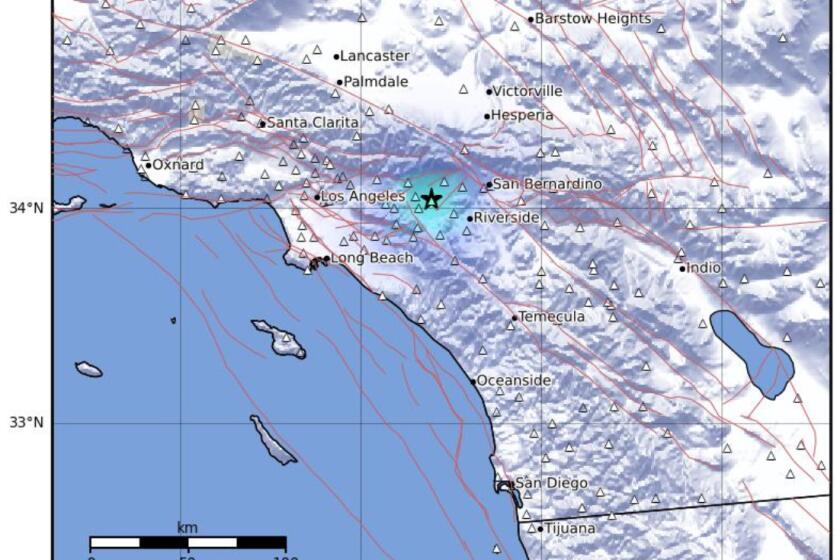Is my building vulnerable in a big earthquake? Here’s how to find out
The Ridgecrest earthquakes didn’t cause any notable damage in the Greater Los Angeles area.
But the shaking did spur hundreds of thousands to ask that eternal question in earthquake country: How safe is my building?
Major earthquakes in metropolitan areas of California have highlighted the vulnerabilities of certain types of buildings. Unreinforced masonry can crumble. Houses not bolted to foundations can slide. Brittle concrete towers can collapse, as can “soft story” apartment buildings.
Government agencies, researchers and journalists have begun compiling inventories of some of the buildings that might be at risk.
Here are some of the most vulnerable places, as compiled from The Times’ archives:
Soft-story apartments
Los Angeles inspectors spent about two years developing a list of 13,500 so-called soft-story buildings that probably need seismic strengthening. These apartments, which feature flimsy first floors that often serve as parking spaces, became popular after World War II as Los Angeles was spreading north into the San Fernando Valley and west toward the ocean.
But they’ve also proved to be vulnerable to violent shaking. Such buildings collapsed in the 1989 Loma Prieta earthquake and the 1994 Northridge earthquake, including one apartment building where 16 people died.
Owners of each building have been put on notice, and a number of them already have begun the retrofitting process. The retrofits can cost as much as $130,000, which has sparked concerns from owners and residents feeling the pressure of rising rents and a housing crunch.
SEARCH: Check out our database of vulnerable L.A. buildings by address
SEARCH: San Francisco’s soft-story buildings that are covered under the quake retrofit ordinance
SEARCH: Santa Monica’s list.
SEARCH: West Hollywood’s list.
Concrete buildings
A Times analysis found more than 1,000 older concrete buildings in Los Angeles and hundreds more throughout the county may be at risk of collapsing in a major earthquake.
Despite their sturdy appearance, some of the buildings are vulnerable to the sideways movement of a major earthquake because they don’t have enough steel reinforced bars to hold columns in place. University of California researchers estimate that about 75 of the nearly 1,500 buildings on the list could collapse in a large earthquake, exposing thousands to injury or death.
Each building would need to be examined more closely and undergo extensive testing to gauge its vulnerability; some may be safe, some may turn out not to be concrete. Scientists stressed that the list is not 100% accurate and that they have not reached any conclusions about the safety or hazard posed by any of the 1,451 buildings.
A separate group of scientists used public records, maps and street surveys to compile a list of nearly 1,500 concrete buildings constructed before 1976 in Los Angeles.
SEARCH: The Times’ database of older concrete buildings
Faults and liquefaction
Parts of California — including Los Angeles County — are crisscrossed with faults. Living above or adjacent to faults also increases the chance of damage in a quake.
Some areas are also vulnerable to liquefaction. Shaking from an earthquake can cause land to behave like quicksand, causing the ground to fail. This can happen in places where the land is made of loose sand or silt and filled with groundwater.
Liquefaction also can cause something called “lateral spreading,” in which the ground can slide down gentle slopes or toward the bank of a river while on top of a buried layer that acts like a liquid.
SEARCH: California’s fault activity map
SEARCH: The Times’ map of the Hollywood fault
SEARCH: California’s hazards and liquefaction map
More to Read
Sign up for Essential California
The most important California stories and recommendations in your inbox every morning.
You may occasionally receive promotional content from the Los Angeles Times.












